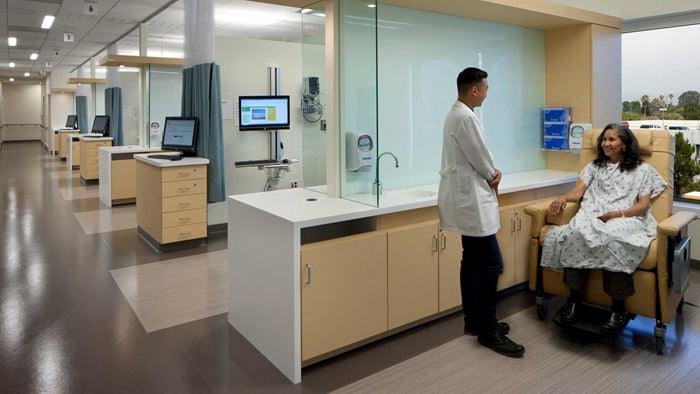What have we learnt from the COVID-19 pandemic? Are we better prepared to cope with new viruses or even two pandemics happening at once? What areas should we invest in today, as societies or governments, to make sure we can respond more quickly and effectively next time? For everyone agrees, there will be a next time.
The COVID-19 pandemic demonstrated that pandemics are a complex phenomenon, fuelled by a multitude of interconnected factors. It also revealed deeply rooted structural weaknesses in our health, socioeconomic, environmental, and political systems.
Arup has worked with the World Health Organization (WHO) and key partners to explore what the future of infectious threats might look like. Based on the COVID-19 pandemic, Arup’s Foresight team collaborated with WHO to develop a set of four plausible scenarios to illustrate the different directions both current and future pandemics and epidemics might take in the next three to five years.
Four insight driven scenarios
Using the morphological approach for scenario building, we analysed the key trends and factors shaping the future of the COVID-19 pandemic and other infectious threats. We developed four plausible scenarios which could inform strategic recommendations and define practical ways forward for improved pandemic preparedness.
Scenario 1 is called “Happy Days”, in which we all benefit from widespread immunity and scientific progress happening at pace. At the other end there is Scenario 4 “Here comes trouble”, in which a double pandemic leads to the breakdown of global collaboration and a struggle for scalable solutions. Between the best- and worst-case scenarios, we imagine what would happen if COVID-19 became a permanent part of our lives (Scenario 2 “I Love You, I Hate You”) or became even more infectious (Scenario 3 “Heartbreak Hotel”).
Working with the WHO and more than 150 stakeholders with a wide range of backgrounds and expertise, we used the scenarios as a tool for strategic dialogue, and to develop a set of key recommendations and suitable actions for policy and decision makers. The ultimate aim was to improve the preparedness and management of both the ongoing pandemic and future infectious threats.
Project Summary
150 stakeholders engaged
15strategic recommendations
75practical ways forward
Imagining future public health challenges and being able to predict accurately their likely effects, requires a highly collaborative and insight-driven approach. This project combined foresight methodologies with stakeholder and community engagement. Through a series of briefing sessions, expert workshops, public roundtable discussions and webinars, we engaged with a wide range of experts, partners and collaborators across government, healthcare authorities, academia, the private sector, and the media.
“This robust approach provides governments and leaders with a framework to support the transition from emergency response to future preparedness, helping to foster a more proactive, action orientated response to future pandemics. ” Sylvie Briand Director of Epidemic and Pandemic Preparedness and Prevention, WHO
Towards better pandemic preparedness
Being better prepared for future infectious threats requires a mindset shift and the adoption of different policies, strategies, and approaches. Foresight can support the transition from emergency response to proactive infectious threat planning and management.
The danger is that by the next pandemic, which may be a very different kind of infectious threat to COVID-19, we continue to be similarly unprepared in our response. That’s why improved pandemic preparedness will require the use of foresight methodologies, as well as a commitment to more effective communication and collaboration between governments, scientists, public health authorities, healthcare communities, the private sector, media, and citizens.
In the future, nations should share more information, data, knowledge, expertise, and resources. Coordinated efforts must ensure that the benefits of technological innovation are widespread, healthcare systems are strengthened for improved resilience, and policy and international preparedness frameworks are based on solid scientific bases. Ultimately, the global community must recognise infectious threats as global human experiences that begin and end in communities. Without this global co-operation, it will be difficult to restore much-needed trust between individuals and collectives and be better prepared for upcoming eventualities.
Download the full report
Imagining the future of pandemics and epidemics: a 2022 perspective
We can help
With global experience and a powerful research base, Arup provides strategic advice and market insights for commercial clients in every sector.
Find out more about our strategy and insights expertise.
 ;
;



